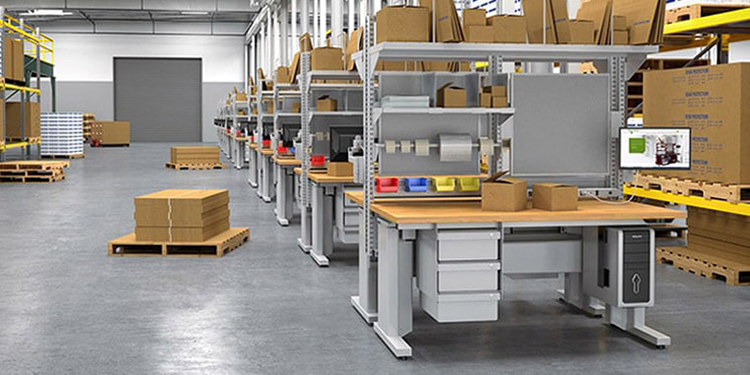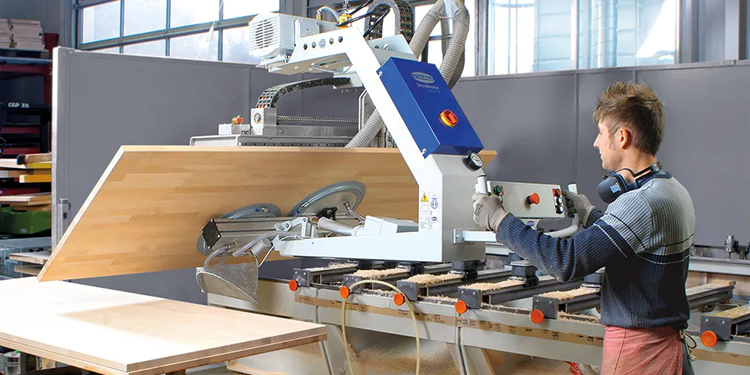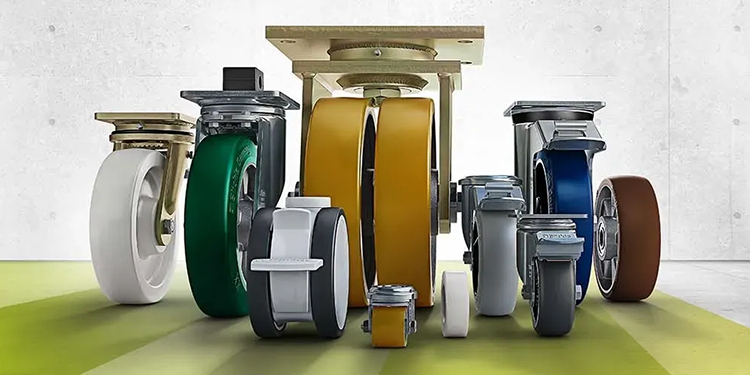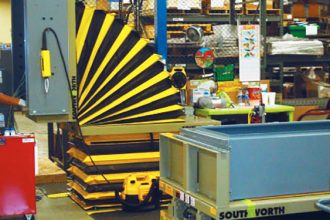
Deploying ergonomic solutions in manufacturing and distribution operations improves productivity while reducing the risk of injury. Both of those benefits can have a positive impact on workforce attraction and retention. These were the key messages offered by the Ergonomic Assist Systems & Equipment (EASE) Council during an educational seminar at MODEX 2024. The EASE Council panel also shared tips for successful ergonomic equipment implementations.
Steve Graffam, Product Manager at EASE Council member Blue Giant Equipment Corporation, moderated the discussion, “Ergonomics in Modern Manufacturing: Ergonomic Assist Systems & Equipment.” Participating in the panel were:
- Rob Doucette, Senior Applications Engineer at BOSTONtec
- Rob Jorden, Vice President of Engineering at Blickle Wheels & Casters USA
- Grant Welch, National Sales Manager of Handling Systems at Schmalz
The trio answered five different questions posed by Graffam. Each offered insights based on experiences helping companies implement ergonomic equipment throughout a variety of industries and processes.
Ergonomic Equipment Addresses Graying Workforce
The discussion kicked off with an examination of how companies can address the needs of older workers with ergonomic equipment. The panelists focused on solutions that supplement this demographic’s reduced physical capabilities compared to younger generations.

“Ergonomic equipment such as lift assist systems, tilt tables, or pallet positioners make jobs easier for older workers,” noted Jorden. “This demographic is typically less agile, has less physical strength, and also less endurance. Ergonomic systems that make a job easier for older workers improve retention and make it easier to recruit this demographic.”
Impact of Ergonomic Equipment on Workforce Retention
As manufacturing and distribution facilities continue to face staffing challenges, the panelists described how improving ergonomics can facilitate talent retention.
Welch noted that operations leveraging ergonomic equipment make physical tasks less strenuous and more pleasant to perform. “If an employee finds that the job is something they enjoy doing from day one, they’re more likely to stay. If the job is hard and unpleasant, they have lots of other choices of employer — many of which offer signing bonuses and other incentives,” he said.

How Ergonomic Solutions Increase Productivity with Fewer Workers
The persistence of ongoing workforce shortages means operations must find ways to increase productivity rates with a reduced headcount. One approach is to deploy ergonomic equipment that allows workers to be more productive while expending less physical effort.
“For example, lift assist devices such as vacuum lifters allow one associate to perform tasks that previously required two people. Things like moving a sheet of metal or wood, or a keg of beer,” explained Welch. “The lift assist device also allows an employee to handle a higher volume of work with less fatigue.”

Doucette agreed. “Ergonomics implemented correctly can have great impacts on productivity,” he said. “It’s also crucial to have a solid ergonomic team within the organization that’s continuously working to improve employee ergonomics. Their role is to constantly monitor and help workers become more effective while making jobs simpler and less strenuous.”
Determining What Can and Can’t be Automated
The panel also discussed the process of determining when and where automation is an appropriate solution. The trio agreed that automated solutions are optimal for tasks that are both routine and repeatable. Additionally, the automated equipment has to produce an adequate return on investment (ROI) to justify the purchase.

After automating the highly repeatable, cost justifiable processes, Jorden advised operations managers to look for the task that workers complain about the most. “If there’s a position where a lot of people get hurt or are really worn out at the end of the day, that’s a candidate for automation,” he said. “Maybe the task has enough variability that it isn’t possible to deploy full automation. Instead add in ergonomic equipment that makes the task semi-automated.”
Solicit Employee Input for Successful Ergonomic Equipment Implementations
All three panelists agreed that engaging front-line workers for input and feedback on prospective ergonomic equipment deployments is critical for success.
“Simply putting out a suggestion box next to a sample piece of ergonomic equipment so workers can try it out can generate valuable input,” said Doucette. “Not only does that help with efforts to improve ergonomics in general, but also it boosts morale. Employees want to feel heard. If they see that you’re listening, they’re more likely to support the change and use the ergonomic equipment they helped select.”
Looking for More Information About Ergonomic Solutions?
The recording of the complete MODEX 2024 panel discussion is available via www.modexshow.com. Further, the members of the Ergonomic Assist Systems & Equipment (EASE) Council of MHI are always available to consult, answer questions, and make recommendations about safe equipment use.



